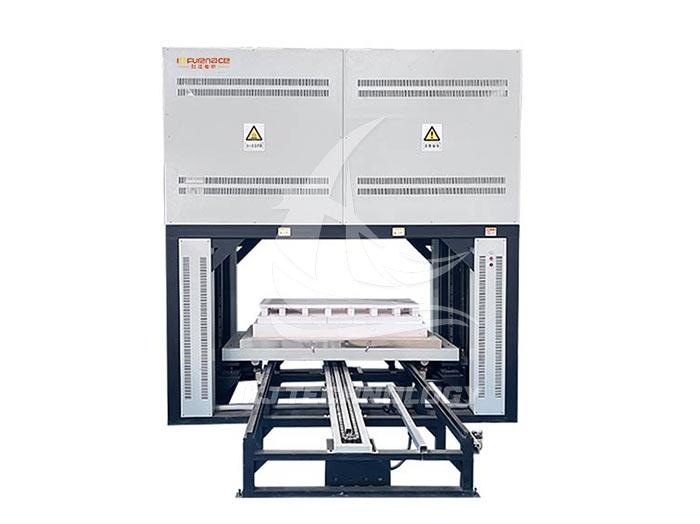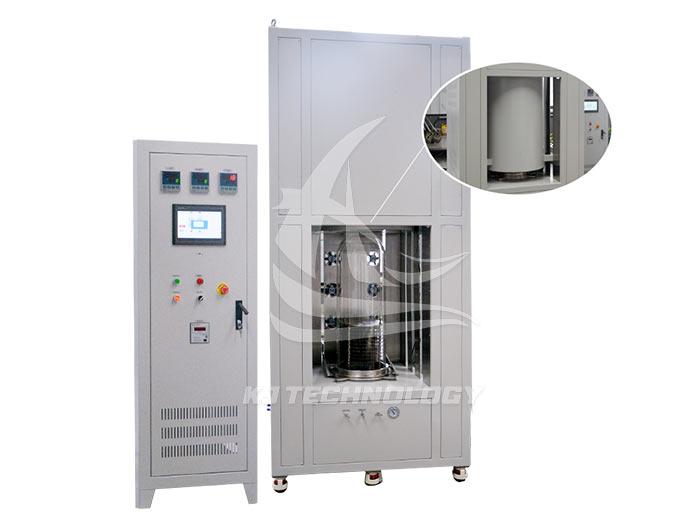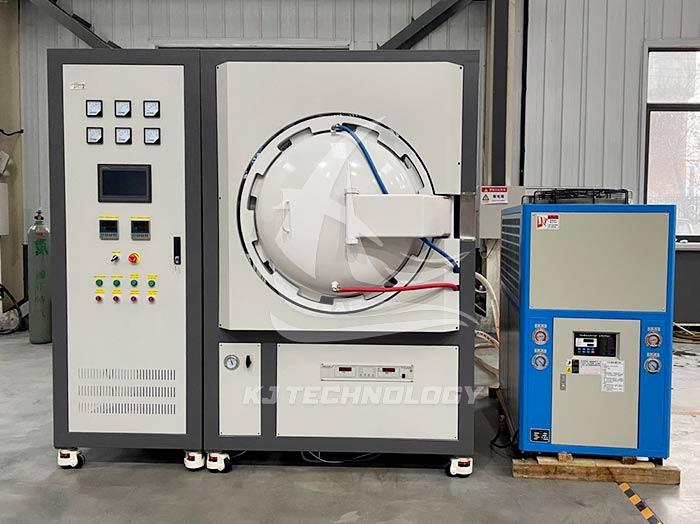Daily maintenance of graphite high-temperature vacuum furnace
 05-23-2025 Author: KJ technology
05-23-2025 Author: KJ technology
Graphite high-temperature vacuum furnace is a key equipment used for material processing under high temperature and vacuum conditions in industrial production. Its daily maintenance is crucial for extending equipment life, ensuring operational stability, and improving product quality. The following is a detailed guide for daily maintenance of graphite high-temperature vacuum furnaces:
1. Daily inspection
VISUAL INSPECTION
Inspect the furnace body: Check for cracks, deformation, or corrosion to ensure the integrity of the furnace structure.
Check the seals: Check whether the seals at the furnace door, observation window, and pipeline connections are intact, whether they are aging, damaged, or loose.
Check fasteners: Confirm that all bolts, nuts, and other fasteners are tightened to prevent air leakage or equipment vibration caused by looseness.
Electrical system inspection
Check the power supply: Ensure that the power connection is normal, the voltage is stable, and there are no short circuits or leakage phenomena.
Check the control system: Check whether the indicator lights and display screen on the control panel are working properly, and whether the function buttons are sensitive.
Check electrical components: Check for signs of overheating, burning, or damage to electrical components such as contactors, relays, and circuit breakers.
Vacuum system inspection
Check the vacuum pump: Observe whether the vacuum pump runs smoothly and whether there are any abnormal noises or vibrations.
Check the vacuum pipeline: Check if there is any air leakage in the vacuum pipeline and if the pipeline connections are securely fastened.
Check the vacuum gauge: Confirm that the vacuum gauge displays accurately, without any jamming or malfunction.
Heating system inspection
Check the heating element: Check whether the graphite heating element is broken, deformed, or ablated to ensure uniform heating.
Check the thermocouple: Confirm that the thermocouple is installed in the correct position, the measurement is accurate, and there is no looseness or damage.
2. Regular maintenance
Clean the furnace
Remove debris: Regularly clean the residue, carbon deposits, or oxide scale in the furnace to prevent affecting heat conduction and temperature uniformity.
Wipe the inner wall: Use a dust-free cloth or specialized cleaning agent to wipe the inner wall of the furnace to maintain a smooth surface and reduce heat radiation loss.
Replace vulnerable parts
Replace seals: Regularly replace seals on furnace doors, observation windows, and other parts according to usage to prevent a decrease in vacuum due to aging seals.
Replace heating elements: Check and replace aging heating elements to ensure heating efficiency.
Lubricate moving parts: Regularly lubricate the furnace door hinges and other parts with oil to reduce wear.
Calibrate temperature control system
Verify temperature sensor: Regularly use a standard thermometer to verify the temperature sensor inside the furnace to ensure accurate temperature display.
Adjust PID parameters: Optimize PID control parameters based on actual operating conditions to improve temperature control accuracy.
Maintain the vacuum system
Replace vacuum pump oil: Regularly replace mechanical pump oil to ensure stable performance of the vacuum pump.
Check the vacuum gauge: calibrate the vacuum gauge to ensure accurate measurement of vacuum degree.
3. Lubrication and anti-corrosion
Lubrication of mechanical components
Bearing lubrication: Regularly lubricate the bearings and guide rails of the moving parts of the furnace body (such as the lifting mechanism) to reduce wear.
Transmission component inspection: Check the transmission components such as chains and gears, and apply high-temperature resistant grease if necessary.
Anti-corrosion treatment
Rust proof coating: Apply rust proof oil to the exposed metal parts of the furnace to prevent corrosion in humid environments.
Insulation inspection: Regularly check the insulation performance of heating elements to prevent leakage risks.
4. Safety operation standards
Operation training
Safety education: Regularly organize operator training to strengthen safety operating procedures and emergency response capabilities.
Certified on duty: Ensure that operators have professional qualifications and are familiar with equipment characteristics.
Emergency preparedness
Emergency plan: Develop emergency plans for equipment failures, power outages, and other unexpected situations, and conduct regular drills.
Safety device inspection: Monthly inspection of safety devices such as safety valves and over temperature alarms to ensure sensitivity and reliability.
5. Record and archive management
Operation records
Temperature curve: Record the temperature curve of each heating process and analyze the uniformity of the thermal field.
Fault record: Detailed recording of equipment fault phenomena, handling processes, and results, forming maintenance files.
Maintenance plan
Regular maintenance: Develop annual, quarterly, and monthly maintenance plans, clarify maintenance items and responsible persons.
Spare parts management: Establish a critical spare parts list to ensure timely replacement of damaged parts.
6. Common problem emergency response
Abnormal temperature
Sensor calibration: Regularly calibrate thermocouples to ensure accurate temperature measurement.
Heating element inspection: Check whether the graphite heating element is aging or damaged, and replace it in a timely manner.
Insufficient vacuum degree
Vacuum pump maintenance: Regularly replace the vacuum pump oil and clean the impurities inside the pump.
Leak detection: Regularly check the sealing of the furnace body using a helium mass spectrometer leak detector.
7. Maintenance precautions
Operating standards: Before maintenance, the power should be cut off and a warning sign should be hung, and protective equipment should be worn.
Data recording: Establish equipment files to record maintenance time, content, and replacement part information.
Professional training: Regularly organize operator training to enhance emergency response capabilities.
8. Summary
The daily maintenance of graphite high-temperature vacuum furnaces should focus on preventive maintenance, which can significantly improve equipment reliability and production efficiency through systematic inspection, standardized operation, and scientific management. It is recommended to establish a predictive maintenance model based on equipment operation data, such as analyzing the temperature curve to determine the status of heating elements, or monitoring the health of the sealing system through changes in vacuum degree, to achieve the transition from "passive maintenance" to "active prevention".








